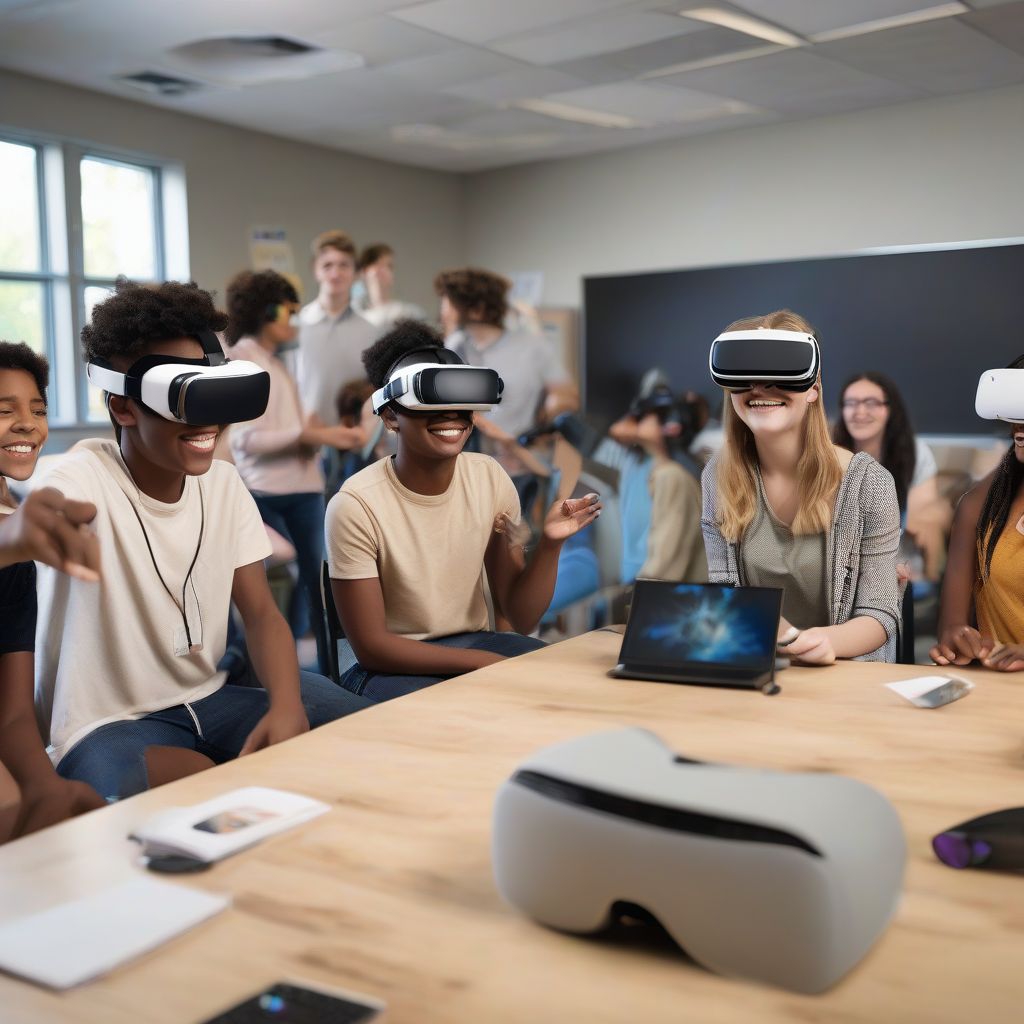Imagine a classroom where students can travel to ancient Rome, dissect a human heart without picking up a scalpel, or explore the depths of the ocean – all from their desks. This is the potential of virtual reality (VR) in education.
For years, educators have relied on textbooks, lectures, and the occasional field trip to bring learning to life. Now, VR offers an immersive and engaging alternative, capable of transforming traditional classroom settings into dynamic learning environments. This article will explore the practical ways to integrate VR into education, addressing both the potential benefits and the challenges educators might face.
Understanding the Power of VR in Education
Before diving into implementation, it’s essential to understand why VR is such a powerful tool for learning. Unlike traditional methods, VR engages students on multiple sensory levels:
- Immersive Experiences: VR transports students from their desks to any location or time period imaginable, fostering a deeper understanding of the subject matter.
- Experiential Learning: By interacting with virtual environments, students gain hands-on experience that traditional learning methods often lack. Imagine building a molecule in a chemistry lesson or coding a robot’s movements in real-time.
- Increased Engagement and Motivation: The novelty and interactive nature of VR naturally captivates students’ attention, leading to increased motivation and knowledge retention.
Practical Steps to Integrate VR in the Classroom
Integrating VR doesn’t mean replacing traditional teaching methods entirely. Instead, it’s about using this technology strategically to enhance existing curriculum:
1. Identify Learning Objectives and Suitable Content
- Start Small: Begin by integrating VR into one lesson or subject area where it aligns well with learning objectives. Subjects with a strong visual component, like history, geography, or science, are often ideal starting points.
- Explore Existing Resources: Many educational VR applications and platforms are already available, covering a wide range of subjects and grade levels.
 Students Using VR Headsets in Classroom
Students Using VR Headsets in Classroom
2. Invest in Appropriate VR Hardware and Software
- Choose the Right Hardware: The choice of VR headsets and equipment depends on your budget and the complexity of the VR experiences you want to offer. Standalone headsets offer a good balance between cost and capability.
- Select Engaging Software: Opt for high-quality VR software that is age-appropriate, aligns with curriculum objectives, and provides a user-friendly experience for both teachers and students.
3. Prepare for Implementation
- Classroom Setup: Ensure your classroom has enough space for students to use VR safely and comfortably. Designate areas for putting on and taking off headsets to avoid accidents.
- Technical Support: Familiarize yourself with the VR hardware and software beforehand, and arrange for technical support if needed.
- Student Training: Provide clear instructions to students on how to use the VR equipment safely and responsibly.
4. Facilitate Meaningful Learning Experiences
- Guided Exploration: Provide students with clear learning objectives and guide their exploration within the virtual environment.
- Collaboration and Interaction: Design VR activities that encourage collaboration and discussion among students.
- Debrief and Reflect: After the VR experience, facilitate a debriefing session to discuss observations, insights, and connections to the curriculum.
Addressing Challenges and Concerns
While VR offers immense potential, educators may face challenges:
- Cost: VR headsets and software can be expensive, potentially creating a barrier for some schools. However, as technology advances, costs are likely to decrease.
- Technical Issues: As with any technology, technical glitches can occur. Having a plan for troubleshooting and providing technical support is crucial.
- Teacher Training: Educators need adequate training to effectively integrate VR into their teaching practices.
The Future of VR in Education
VR in education is still in its early stages, but its potential is undeniable. As technology advances and becomes more accessible, we can expect to see even more innovative and impactful uses of VR in the classroom. From virtual field trips to simulated laboratory experiments, VR has the potential to revolutionize how students learn and engage with the world around them.
[amazon bestseller=”virtual reality education”]
Conclusion
Integrating VR into traditional classroom settings holds immense promise for the future of education. By embracing this technology strategically and thoughtfully, educators can create immersive, engaging, and effective learning experiences for students of all ages. As we continue to explore the possibilities of VR in education, we can empower students with the tools they need to become active, engaged, and successful learners in the 21st century.
